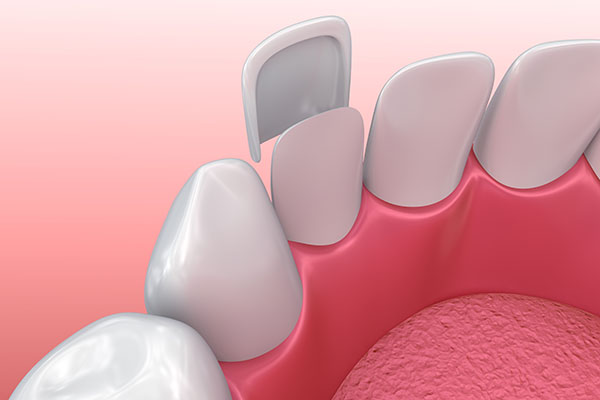 Dental veneers are made of porcelain or composite resin material. The shells cover the front surface of a patient's front teeth and can be used to change the size, shape, or color of teeth. These restorations have been used for years to transform smiles, but some may wonder about their permanency. There are several reasons to remove veneers and more than one option for replacing them as well.
Dental veneers are made of porcelain or composite resin material. The shells cover the front surface of a patient's front teeth and can be used to change the size, shape, or color of teeth. These restorations have been used for years to transform smiles, but some may wonder about their permanency. There are several reasons to remove veneers and more than one option for replacing them as well.
Reasons to remove veneers
According to the American Dental Association, placing veneers is considered an irreversible procedure. Because some enamel is removed, the teeth will always require some type of restoration over them. However, there are times when patients need or desire to have veneers removed. The most common concerns are cavities under the veneers or aesthetic dissatisfaction.
Recurrent decay
Due to the margin between the veneer and the natural tooth, cavities can form around the restoration. The margin can become a ledge on which plaque and bacteria collect. Once the dentist diagnoses recurrent decay around a restoration, it often has to be removed so the underlying tooth can be treated.
Staining or cracking
Some veneers can last for years. However, over time, the porcelain or resin surface becomes stained, and patients may be concerned about how the teeth look. A traditional teeth whitening agent is not effective on porcelain or resin; it can actually etch the surface. The shells may also become chipped or cracked over time. In these situations, removal and replacement are often necessary.
Options to replace veneers
While veneers are an irreversible restoration, this does not mean that replacement is impossible. Once a tooth is prepared for the treatment, it becomes slightly smaller than before. Therefore, the patient needs to cover it with some type of restoration.
New veneers
If a patient has been pleased with veneers and is simply ready for a new set, replacement shells can be an option. In this situation, the existing caps are removed, and new ones are cemented in place. In some cases, the dentist may be able to perform this treatment in only one or two office visits. The patient can choose a new shade for the shells if desired.
Full coverage crowns
If a patient experiences recurrent decay under a veneer, a full-coverage crown may be the next logical step. Unlike a veneer that covers the front surface of the tooth, a crown covers the entire tooth. Like veneers, these can be customized for the size, shape, and color that the patient prefers. Depending on how many teeth are being treated, a combination of veneers and crowns may be used.
Conclusion
Dentistry has come a long way in recent years, and more patients than ever can have a smile to be proud of. Veneers can last for a long time when properly cared for, but patients should be aware of what to do when problems arise. In this way, patients can make an informed decision about their oral health.
Request an appointment or call Precision Smiles at 201-204-1355 for an appointment in our Hackensack office.
Recent Posts
Getting dental veneers can improve your smile. These thin shells can also protect the treated teeth. Your dentist can determine if you can have this treatment. Here are the details to see if you are a candidate for dental veneers.The enamel can thin out because of sweet and acidic foods and drinks. Hard brushing can…
If you are tired of feeling self-conscious about your smile, then dental veneers may be the solution you are looking for. They can help repair chipped, stained, or misaligned teeth. This blog guide will walk you through everything you need to get dental veneers.Dental veneers are thin, custom-made shells that a dentist places over the…
Dental veneers are thin shells that are often made of strong material. Your dentist will attach them to your treated teeth. These restorations may protect and strengthen your teeth, but they may still fail without proper maintenance. Proper care is important to achieve the results that you need. Here are the ways of properly caring…


